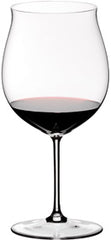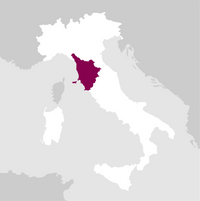描述
The first Haiku vintage was in 2009 and the wine is a blend of 3 varieties: 50% Sangiovese, and 25% each of Cabernet Franc and Merlot. During the planting of the second section of the Montebuoni vineyard, completed in 2001, it was decided to experiment with the renowned international variety, Cabernet Franc, which Ama had never used.
獎項
詳細資訊

香水

顏色

味道
服務於:
18 - 20 °C.
長壽:
10 - 15 years
醒酒時間:
1 hour

搭配
- 創業年份: 1976
- 釀酒師: Marco Pallanti
- 生產的瓶子: 320.000
- 公頃: 75
To date, Castello di Ama owns and manages about 75 hectares of vineyards and 40 hectares of olive groves, relying on the work of more than 60 people. The role of general manager and oenologist is held continuously by Marco Pallanti, who served, between 2006 and 2012, as President of the Chianti Classico Consortium, bringing the contribution of the creation of the 'Gran Selezione' category with the aim of highlighting the extraordinary quality and diversity of the region's wines. 閱讀更多


| 名称 | Castello di Ama Haiku 2020 |
|---|---|
| 类型 | Red green still |
| 葡萄酒名称 | Toscana IGT |
| 年份 | 2020 |
| 容量 | 0,75 l |
| 酒精度 | 14.0% 按體積 |
| 葡萄品种 | 50% Sangiovese, 25% Cabernet Franc, 25% Merlot |
| 国家 | Italy |
| 产地 | Tuscany |
| 供应商 | Castello di Ama |
| 产地 | Località Ama in Chianti - Frazione Lecchi in Chianti - Gaiole in Chianti (SI) |
| 气候 | Altitude: 508–420 m. a.s.l. Exposure: North-East / South-West. |
| 土壤成分 | Clay and limestone. |
| 栽培系统 | Merlot and Cabernet Franc as vertical trellis, single Guyot; Sangiovese as spurred cordon. |
| 发酵温度 | 30-32 °C |
| 酿酒工艺 | Fermentation was started using ambient yeasts, separately for each variety and in steel tanks at a controlled temperature of 30–32 °C, with manual pumpovers and total cuvaison of 25 days for the Sangiovese, 25 days for the Merlot and 25 days for the Cabernet Franc. After first racking, the wine was transferred to barriques for malolactic fermentation. |
| 陈酿 | Assemblage of the 3 varieties took place after malolactic fermentation, then the wine was transferred for 12 months to fine-grain oak barriques, of which 30% were new and the rest were second passage. |
| 总酸度 | 5.4 gr/L |
| 干提取物 | 29.3 gr/L |









